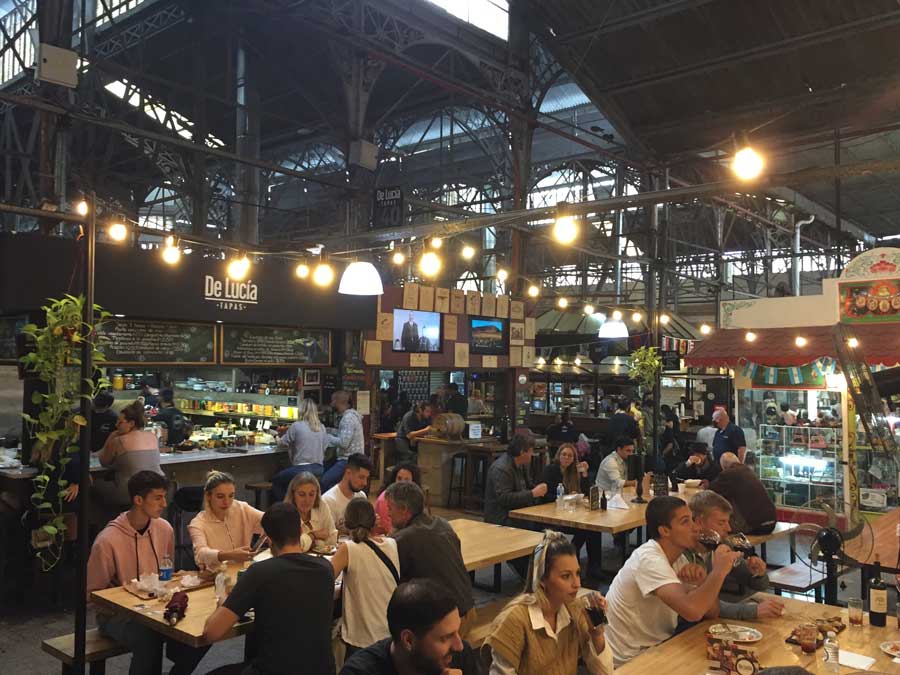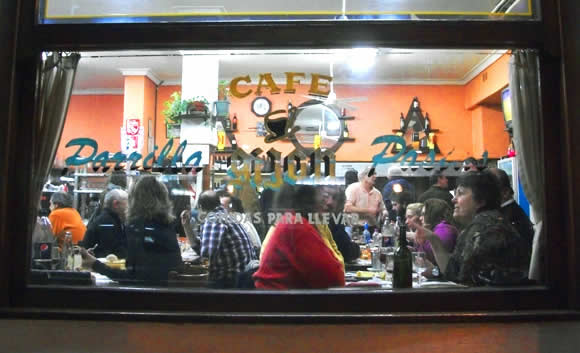Navigating the dining scene in Argentina involves more than just savoring the country’s famed steaks and Malbec wine.

When foreign visitors first go out to eat, they’ll encounter a set of practices that might differ from what they’re used to.
From the expectations around tipping to the often relaxed service pace, a refusal to take credit cards and the customary ‘cover charge’ added to your bill, these elements a part of the Argentine dining experience that leave some travelers baffled.
Argentines dining customs are similar to those in the old country — Europe, but also have some South American twists.
Understanding these nuances before dining out in Argentina can make each meal more enjoyable and help diners appreciate the local customs that shape the food scene in the country.
Q: What is the ‘cubierto’ charge?
What is the ‘cubierto’ charge that shows up on my restaurant bill? Is this a service charge?
Am I a jerk if I don’t leave a tip since I’m paying this seemingly random cubierto charge?
A: The cubierto is the ‘cover charge’ for the fork, knife, placemats and (sometimes) stale bread you receive at the table. It is essentially a ‘table service’ charge, as you sometimes find in Europe.
Some restaurants really push it with the cubierto, essentially using it as a way to fight Argentina’s crazy inflation.
In reaction to cubierto abuse, in 2012 the city of Buenos Aires passed legislation defining what a cubierto should include:
a.) a minimum of 250 ml of drinkable water
b.) one unit of gluten-free bread
c.) sodium-free salt (regular salt is outlawed due to Argentine’s high salt intake, but this law is ignored)
d.) traditional or dietetic bread, depending on the preference of the customer
In practice, few restaurants follow these guidelines, and some such as Filo shamelessly rip off their customers, charging a hefty cubierto without providing even one of the above items.
This charge on your bill makes more sense for a restaurant such as La Cabrera, where the cubierto includes a glass of champagne, nice bread and an array of sauces to enjoy with your meal.
The cubierto goes to the house, not the staff, so you should still leave a tip.
If you don’t like the cubierto charge look for restaurants that have a sign that says, ‘No se cobra cubierto.’
Sometimes places that have made it into the guidebooks and thus are on the ‘gringo trail’ will find a way to let you know: ‘Tips not included.’
This is to avoid cubierto confusion, and apparently, let you know you look like a cheapskate simultaneously.
Yet other restaurants that serve tourists sometimes include an additional service charge — that serves as a tip — on top of the cubierto, so be sure to look over your check.
Q: How much to tip at restaurants in Argentina?
What is an appropriate tip in restaurants in Argentina?
A: Wait staff in Argentina earn a normal, if low hourly wage, unlike in places such as the U.S. where a waiter’s livelihood depends on tips.
Most agree that in Argentina a ten percent tip is appropriate and you’ll observe that many Argentines leave considerably less at more casual establishments.
Additionally, some North Americans unaccustomed to the more laissez-faire service leave less than they normally would, so it works out fine.
→ Read an interview with Charly, a waiter at Cafe Retiro in Buenos Aires
Q: How do I get the waiter’s attention?
I’ve been sitting here for forty minutes and wildly waving my arms to get the waiter’s attention. He doesn’t even glance at me so that I can ask for my check. What should I do?
A: Dining or having a coffee is a drawn-out activity in Argentina and the concept of a ‘quick-turnover’ of tables doesn’t exist.
The typical Argentine waiter doesn’t scan the room much or seem to possess peripheral vision. They just don’t want to make you feel hurried.
If you need to get the waiters attention it is perfectly acceptable to say, “Mozo/a!”(waiter/waitress) in a casual tone, or “Señor/a!” if the waiter is older.
Think ahead, because once you ask for your check, you should expect to wait another little while.
Q: Why can’t I just get a glass of water at a restaurant?
I came in from the heat and there is no water on the table. Why don’t they give glasses of water?
A: Although the water is good drinking quality in most of the country, and Argentina has one of the largest fresh water reserves on the planet, you can’t get a glass of tap water in a restaurant to save your life.
If you order water, you’ll get a bottle.
Be sure to specify, ‘sin gas’ for normal water or ‘con gas’ for mineral or carbonated soda water. Agua con gas is the eco-friendly option because it often comes in old-style reusable siphons, while ‘agua sin gas’ usually comes in plastic bottles.
Q: Why do some places make you wait to see if they can find you a table when the restaurant is half empty?
We tried to go to a restaurant before Argentines usually eat their late dinner and the waiter acted like he had to check if there was room for us.
A: If a restaurant is half empty at dinner time (10:00 p.m.), the food may be sub-par, but some places such as Asia de Cuba regularly do the, ‘Let-me-check-with-my-invisible-friend-to-see-if-we-have-a-table’ routine.
Some VIP spots in Buenos Aires such as high end places in Puerto Madero will do this to every customer who is not a public figure.
The ‘let me see if we have a table’ trick just to make it feel more exclusive – you have to be really wonky-looking to not pass the test, otherwise it may be discrimination.
If you’ve been refused entrance at a restaurant or club in Buenos Aires, tell us about it.
Q: Why don’t people take home leftovers in Argentina?
Why does the waiter staff seem to be restraining themselves from gasping in horror when I ask for a doggy bag?
A: Asking to take home leftovers from a restaurant was once unheard of and is still considered a tiny bit taboo in Buenos Aires, and certainly in the rest of Argentina.
The idea has caught on somewhat in the capital only because of the influx left-over crazy foreigners, a few who own restaurants themselves.
Still, at most establishments you may get a surprised look for asking for a take-way box.
To put it in context, Argentina is a country of bountiful food production.
Most Argentines didn’t grow up with their parents reminding them children are starving in Africa.
When dining in someone’s home in Argentina, it’s even considered polite to leave a little food on the plate, instead of licking it clean.
Leaving a bit of food on the plate indicates that you are full.
If you want to take home your leftovers regardless of being silently judged, say that it is for your pet — that is considered less embarrassing.
⇒ Check out our Food & Drink Tours in Buenos Aires


